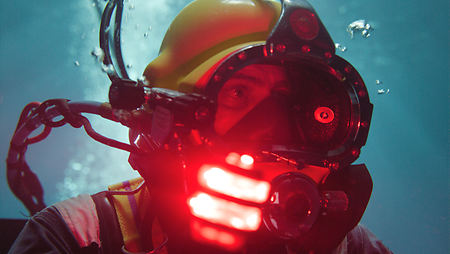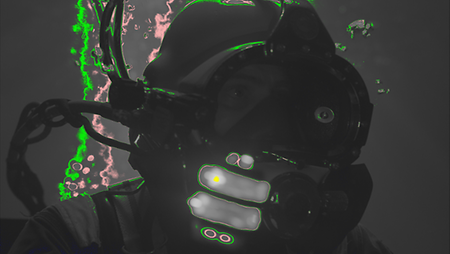A Rec 709 Standard Dynamic Range (SDR) version of the image does not show very much dynamic range. The highlights in the red emergency light look clipped and the dark parts of the image inside the scuba diver helmet appear crushed.
This is because an SDR monitor can only display about eight stops of dynamic range. The camera captures much more information than traditional SDR technology can accommodate; it is simply not possible to display all 17 stops captured by ALEXA 35 on an eight-stop SDR monitor.




